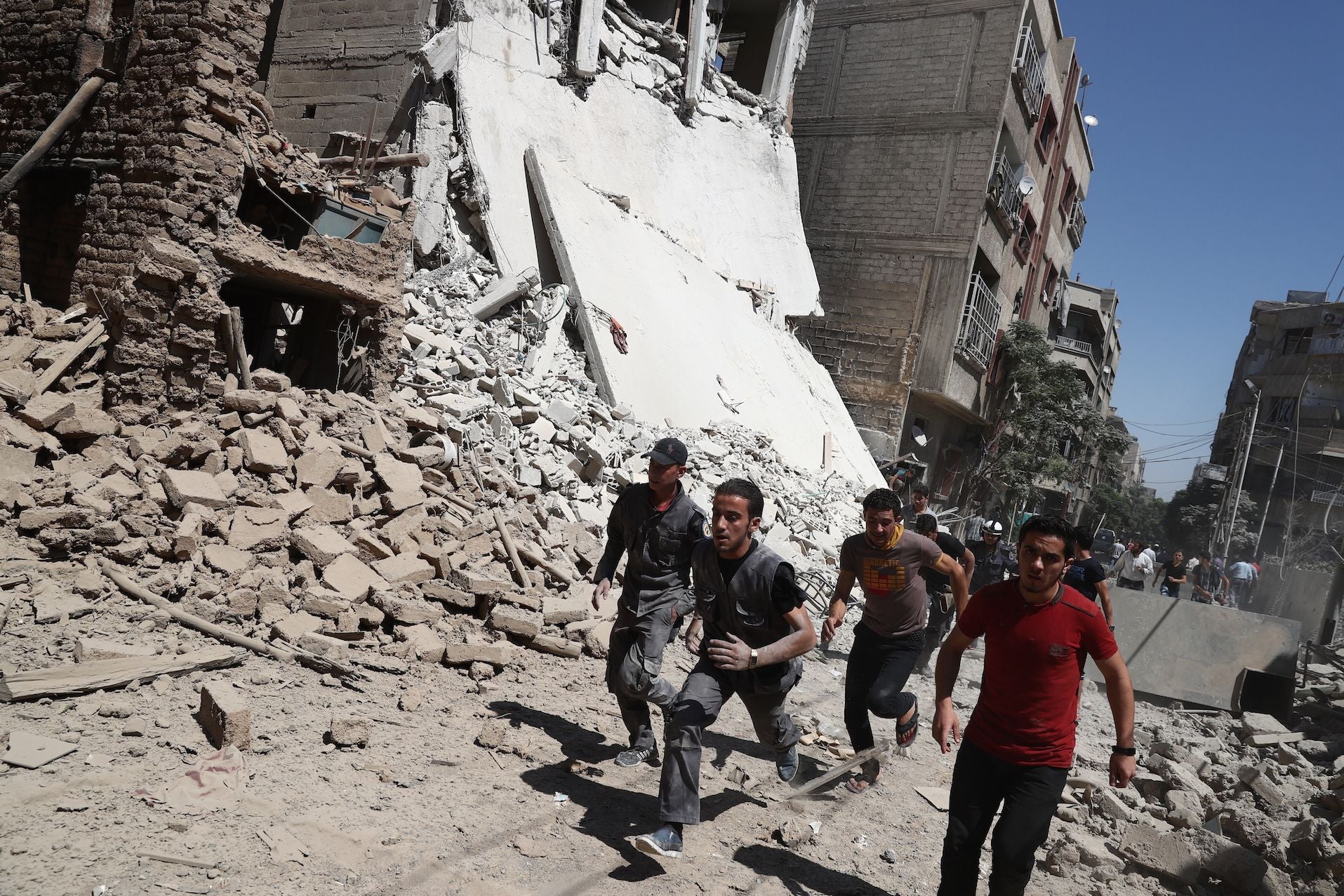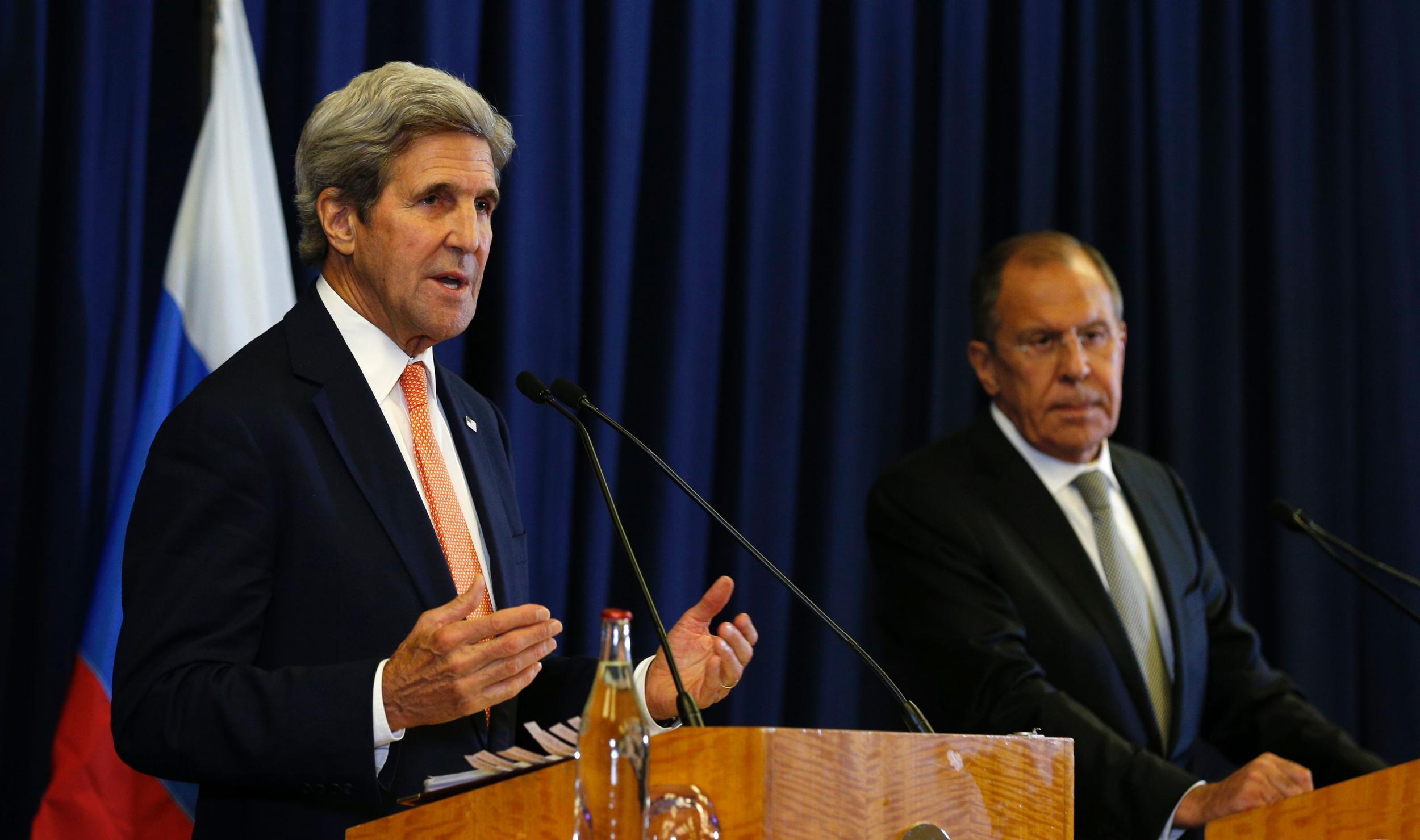Syria peace deal may be a real turning point in ending the war – but al-Nusra and Isis will unlikely go without a fight
The US and Russia’s landmark agreement may drastically reduce the violence that has characterised the last five years in war-ravaged Syria, but as Patrick Cockburn writes from Damascus, much still depends on defeating jihadist rebels and pressuring local allies to comply

The proposed ceasefire in Syria is the outcome of a new balance of power in that country that has developed over the last two years. During this period, the US and Russia became militarily involved in the civil war in Syria and Iraq, providing devastating fire power to their chosen allies on the ground. As main players in the conflict – part rivals and part allies – they should have enough influence on their local proxies and regional friends to bring the war to an end or, at least, to limit and de-escalate the violence.
As US Secretary of State John Kerry and the Russian Foreign Minister Sergei Lavrov announced the historic deal, they were still sounding more than a little uncertain as to whether they could deliver the desired outcome. Mr Kerry said the “bedrock of the agreement”, spelled out in detail in five unpublished documents, will be Russia’s ability to put pressure on President Bashar al-Assad to stop using his air force to fly combat missions against the opposition. He said that Syrian air force bombing was the main cause of civilian casualties and the ceasefire “should put an end to the barrel bombs, an end to the indiscriminate bombing of civilian neighbourhoods”.
This may well be true of Russian pressure on Assad, but equally significant will the ability of the US to put pressure on Turkey, Saudi Arabia and Qatar not to supply Jabhat al-Nusra, the al-Qaeda Syrian affiliate recently relabelled as Jabhat Fateh al-Sham, and other Salafi-jihadi armed groups, with the weapons and money necessary to launch another offensive. Turkey welcomed the ceasefire, but is unlikely permanently to weaken the very groups through which it exercise its power in northern Syria.
The hours prior to any ceasefire, which in this case begins at sunset on Monday, are usually peculiarly dangerous. The temptation for all sides is to indulge in one last spasm of violence or gain some essential piece of ground while this is still possible. The Syrian ceasefire is unfortunately proving to be no exception to this rule: within hours of Mr Kerry speaking in Geneva, Russian or Syrian jets hit a crowded market place in the rebel-held city of Idlib, killing 25 people and turning buildings into heaps of shattered masonry.
One of the problems in implementing the ceasefire is that it is meant to usher in a seven-day truce at the end of which Russia and the US will conduct a joint air war against Isis and Nusra, which are together far the most powerful organisations in the armed opposition. The “moderate” armed opposition is supposed to separate itself from Nusra during this period and seek shelter under a US-Russian air umbrella. A Nusra official said that, if its forces were attacked by the US and Russia, then “we have holy warriors who will burn the ground”. He said that Nusra looked forward to fighting the “coalition of the Crusaders” using a large number of suicide bombers who were available. This threat is unlikely to be mere bravado.

The ceasefire is meant to open the way to negotiations by Syria’s moderate mainstream but largely unarmed opposition to talk about Assad leaving power. But the lowly status and lack of influence of the Riyadh-based High Negotiations Committee, the main opposition body, was underlined when the group admitted that it had not even received a copy of the US-Russian peace deal and could only react when it had done so. It did say, however, that it welcomed an accord which would spare lives that would otherwise be lost to Syrian and Russian bombs.
In addition to an end to the fighting, the first priority of the truce will be to allow UN aid convoys to reach besieged areas, notably in Aleppo. The Syrian army is to withdraw from the Castello Road north of the city, which will be used to supply the estimated 250,000 to 275,000 people in rebel-held east Aleppo. Though the case of Aleppo is highly publicised, it is by no means the worst case and people in the east of the city are not starving, though they are living off pre-positioned UN supplies that are being run down and would eventually give out. There are a further 485,000 people in government-held west Aleppo, with a total population of about 1,550,000, who are also receiving food aid. UN supplies to east Aleppo have been held up because the rebels had wanted the aid to come through the Ramouseh Road in the south of the city which they lost control of in fighting last week.
The politics of aid supply in Syria is complex and usually involves one side wanting to use the aid issue to their own political or military advantage with scant concern for those who are not getting enough to eat. Opposition military forces in Syria and Iraq are well aware of the utility of “human shields” against air attack so that in an apartment block of six floors, the top two and lower two will be home to civilian families, but the middle two will provide living quarters for fighters. In many cases, the defenders will not allow the civilians population to depart and thereby rob them of a human shield and leave them vulnerable to unrestrained air attack. In Raqqa and Mosul, Isis has executed civilians who left the cities without permission and many have paid large bribes to escape.
There are some 590,200 Syrians besieged to a greater or lesser degree in different parts of the country who will now be looking forward to receiving relief aid. But each siege is different, with about a third of the total in dire need, including some 43,000 people in Madaya completely isolated and with no vegetables or fruit available in the town even for those who have money to buy them. Surprisingly, there is mutton for sale because butchers are killing sheep which have no fodder to eat. Eastern Ghouta is the one remaining large opposition enclave in greater Damascus with a population of 282,000 but it includes fertile agricultural land that produces potatoes, cucumbers, lettuces, onions, fava beans and cauliflowers. There is no malnutrition but there is a shortage of seeds and agricultural machinery as well items like surgical kits and school textbooks. By way of contrast, people in Madaya are not only starving, but medical attention is provided by a single dentist.
The success of the ceasefire will depend on just how much pressure the US and Russia are prepared to put on their regional and local allies. Some of these will applaud the deal publicly, but look forward to it failing or do their utmost to sabotage it. But it is easy to be too cynical and pessimistic: the Geneva accord between Russia and the US means that ceasefires, aid convoys and negotiations are now at the top of the international agenda when it comes the Syrian crisis. The “turning point” announced by Mr Kerry will not be easy, but that does not mean that it will not be real.
Join our commenting forum
Join thought-provoking conversations, follow other Independent readers and see their replies
Comments
Bookmark popover
Removed from bookmarks